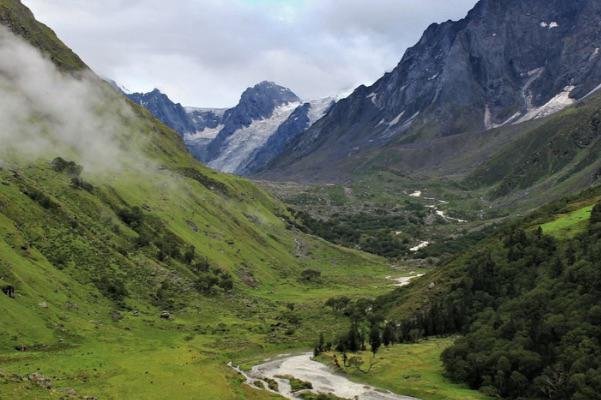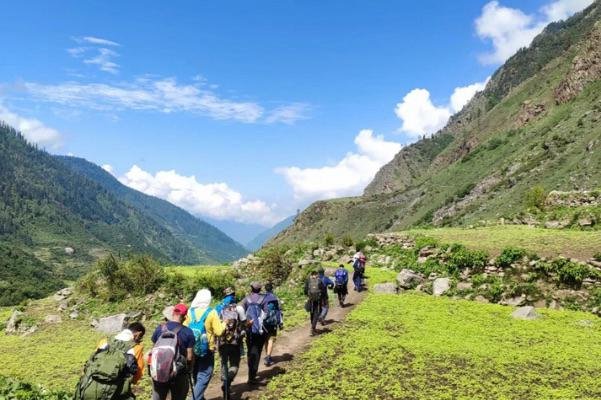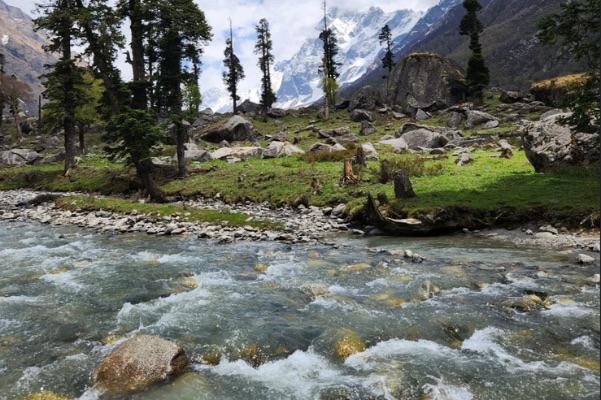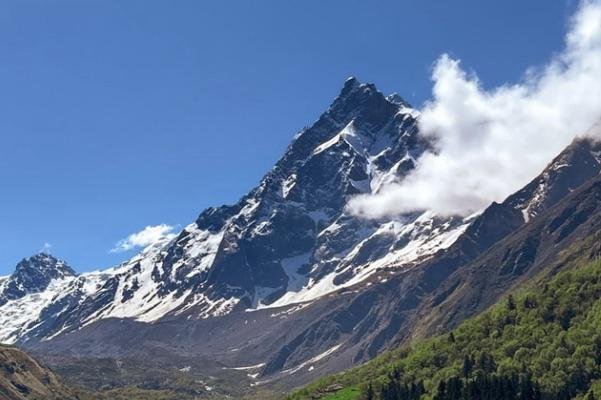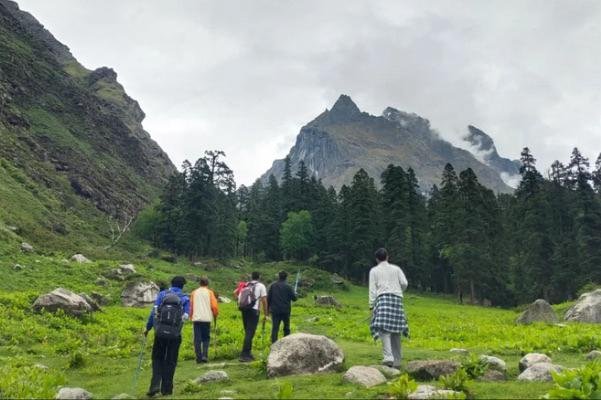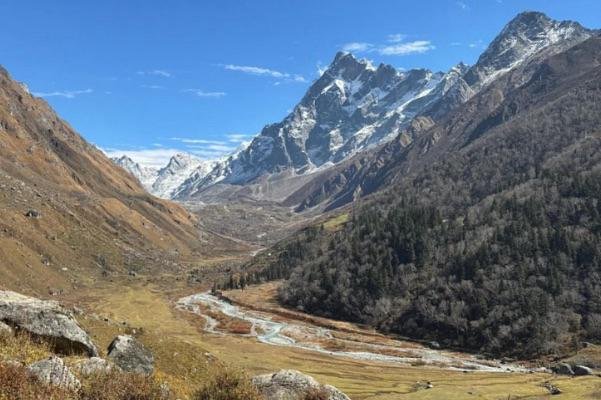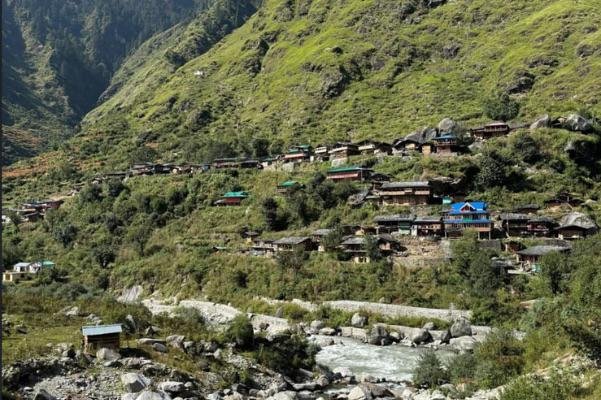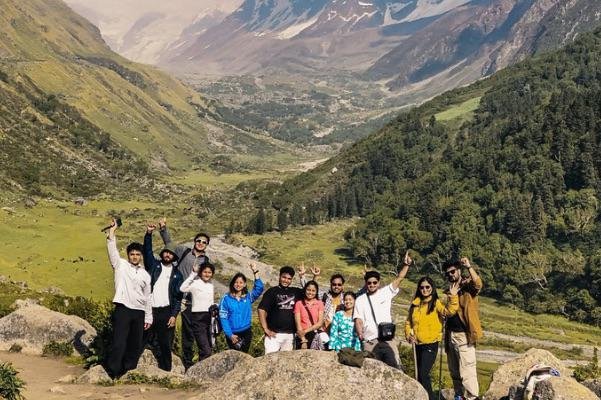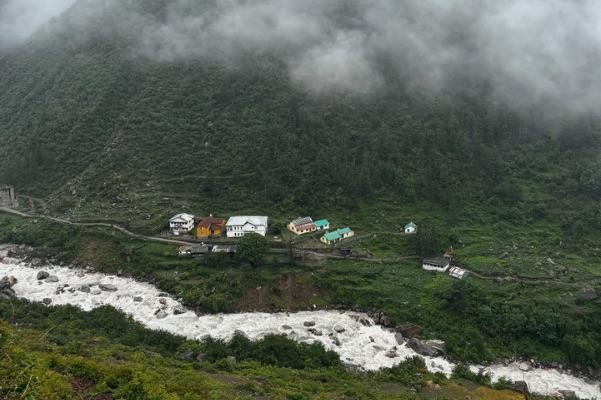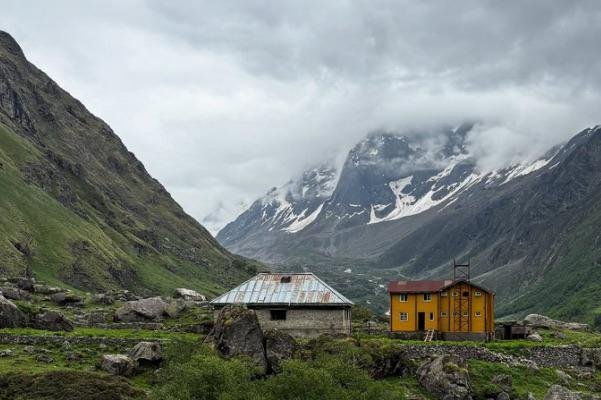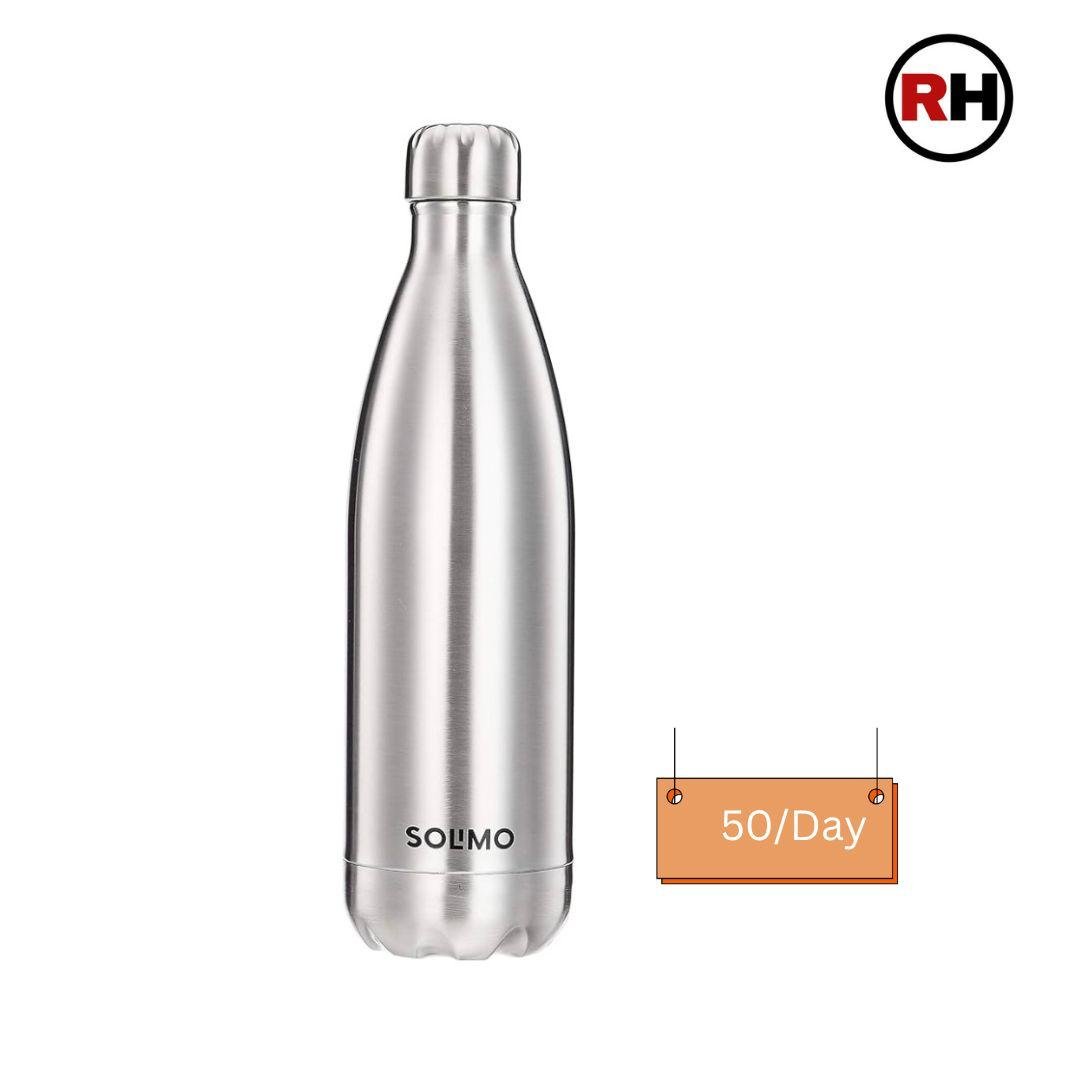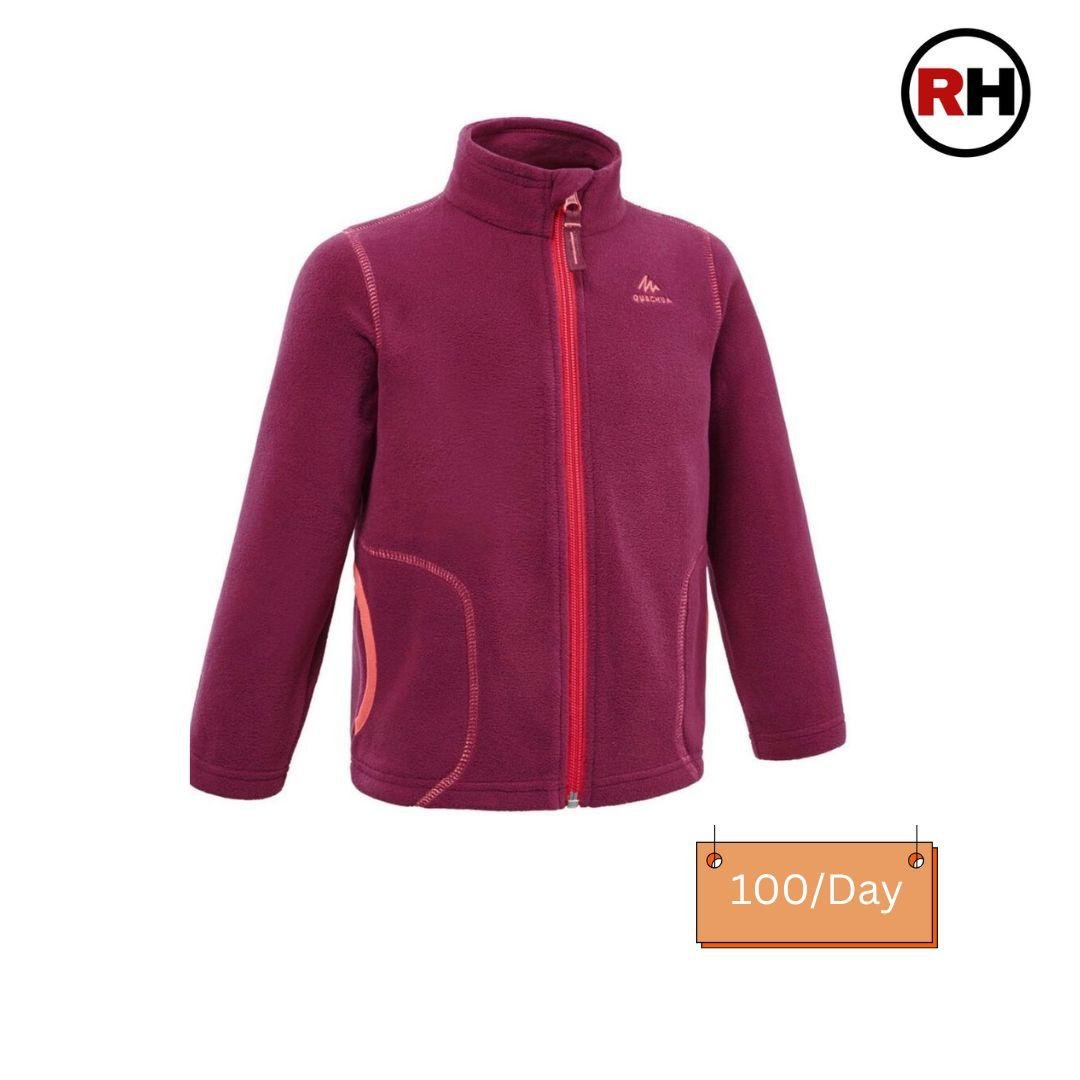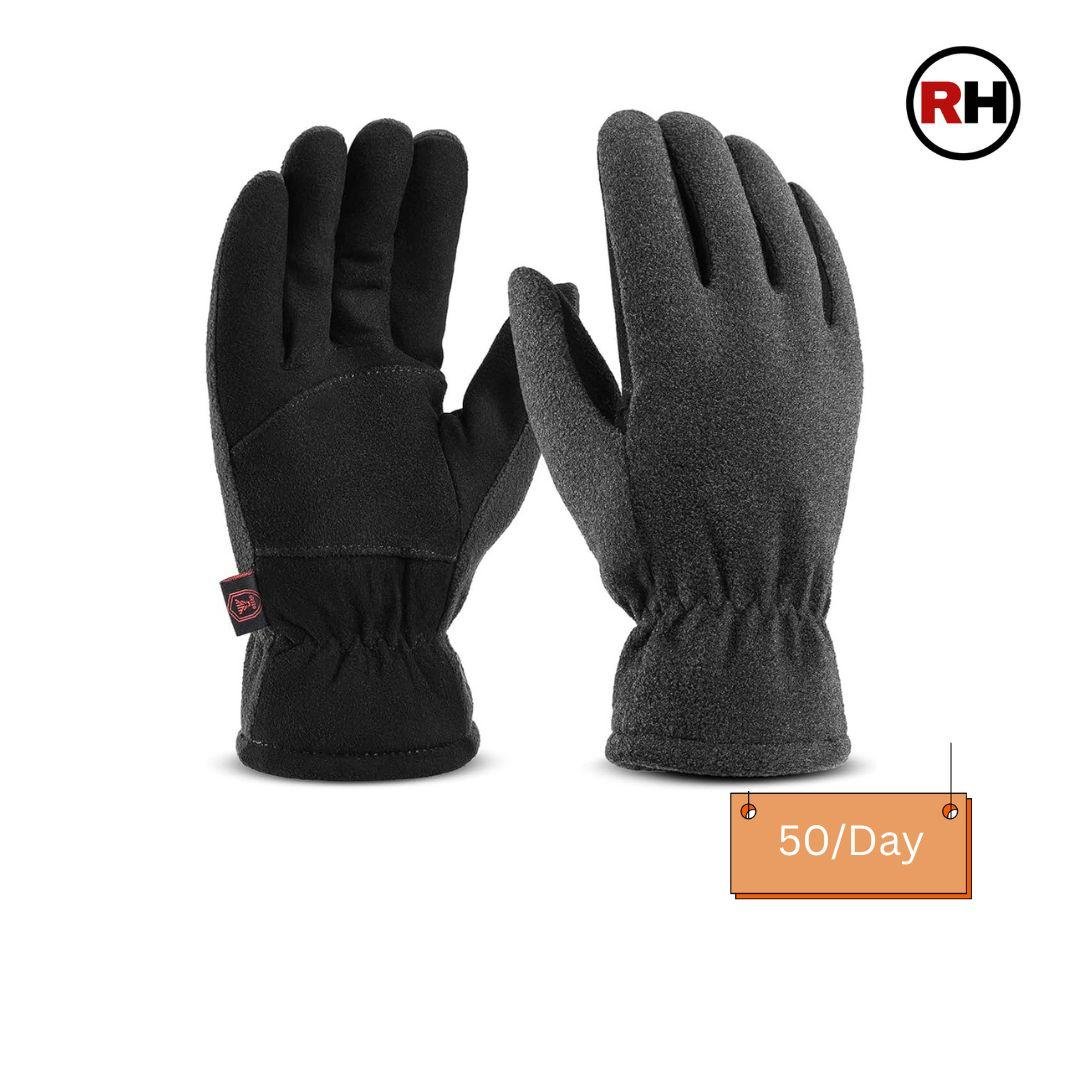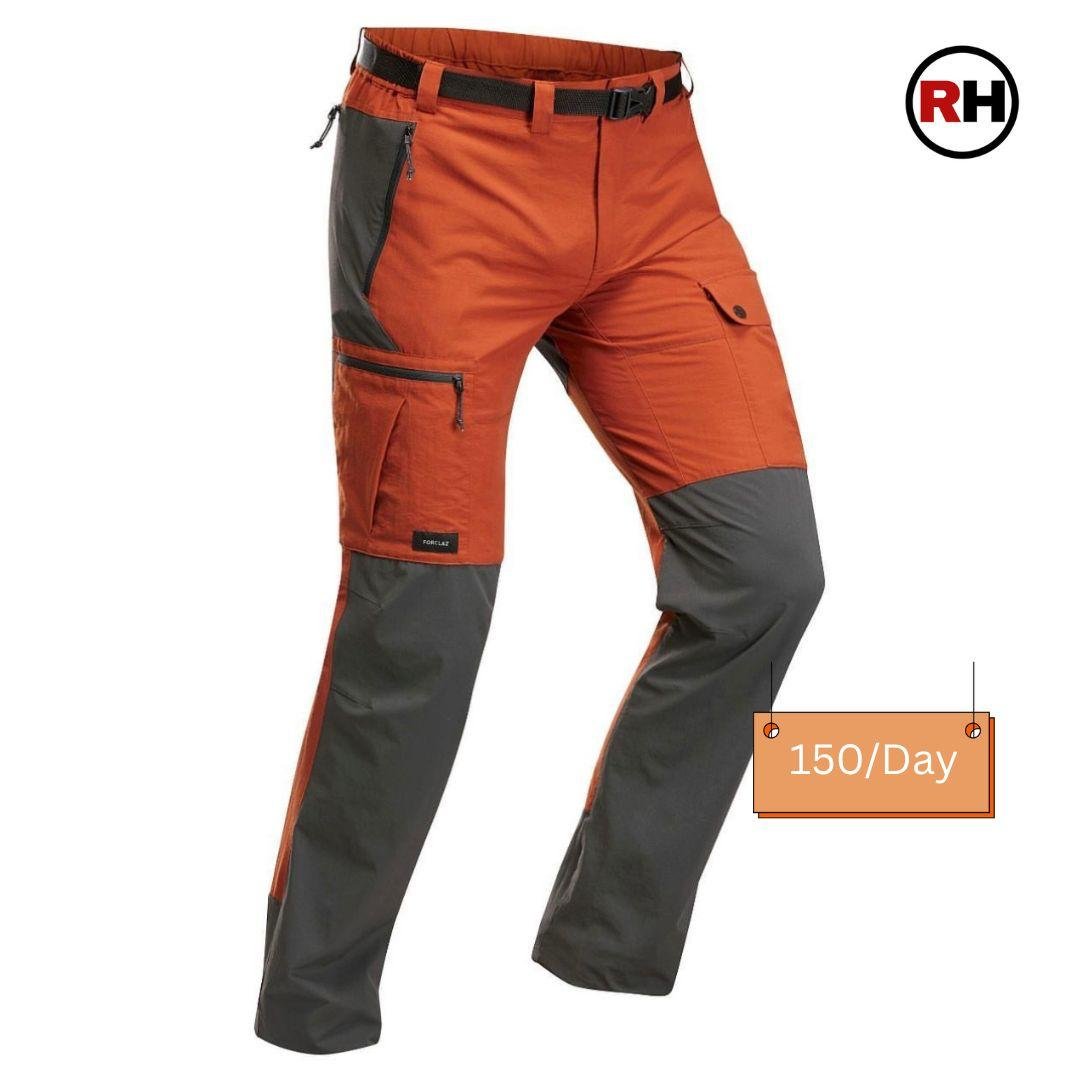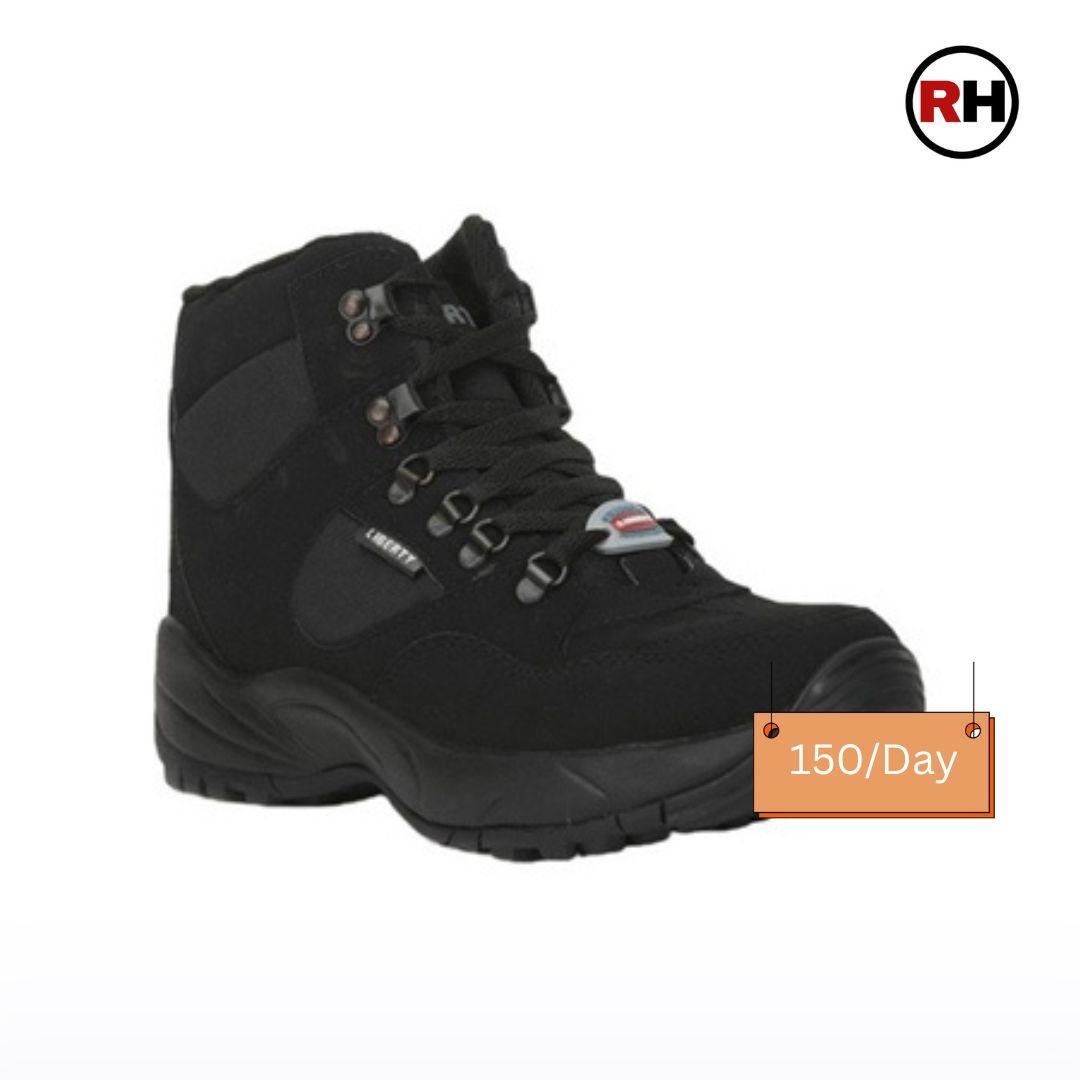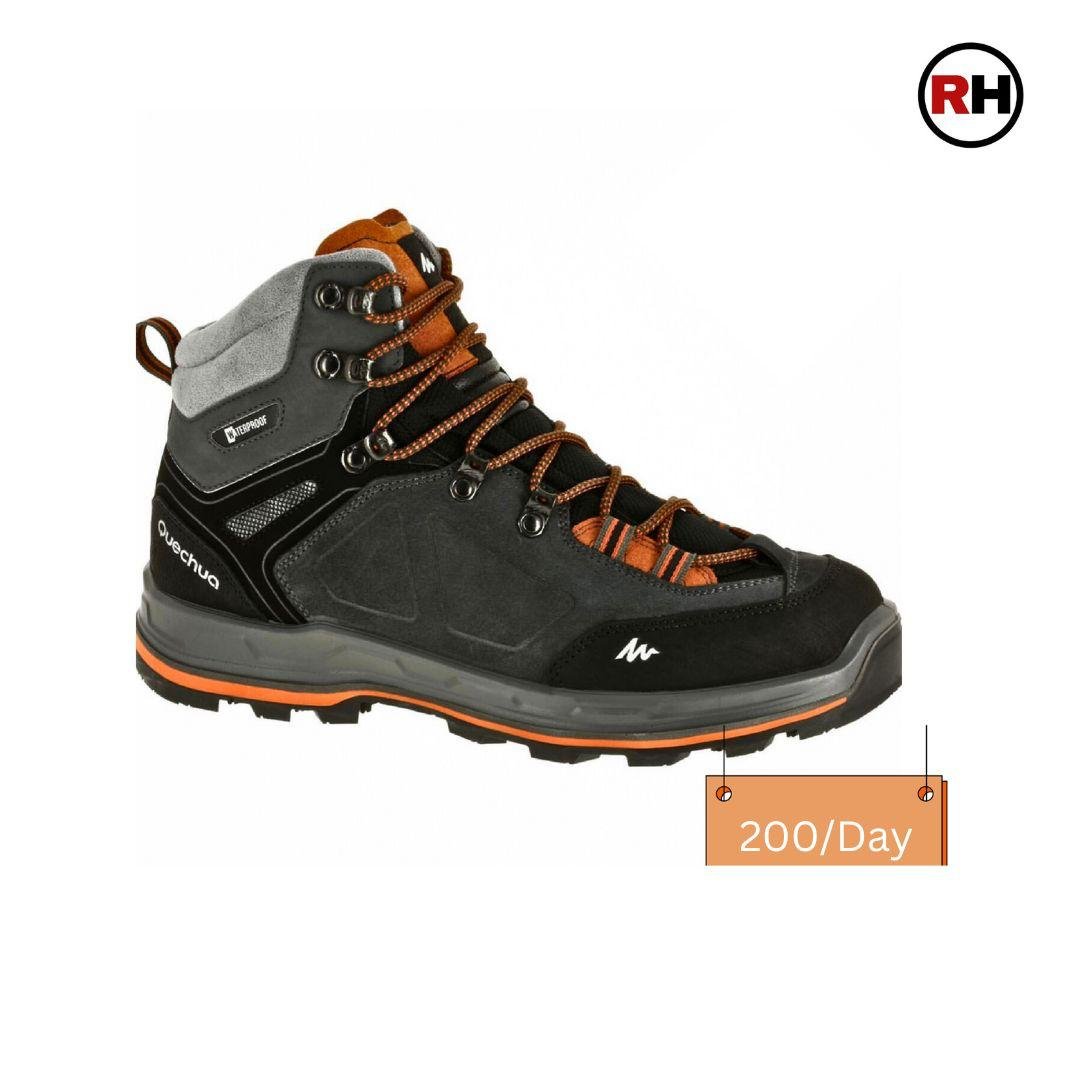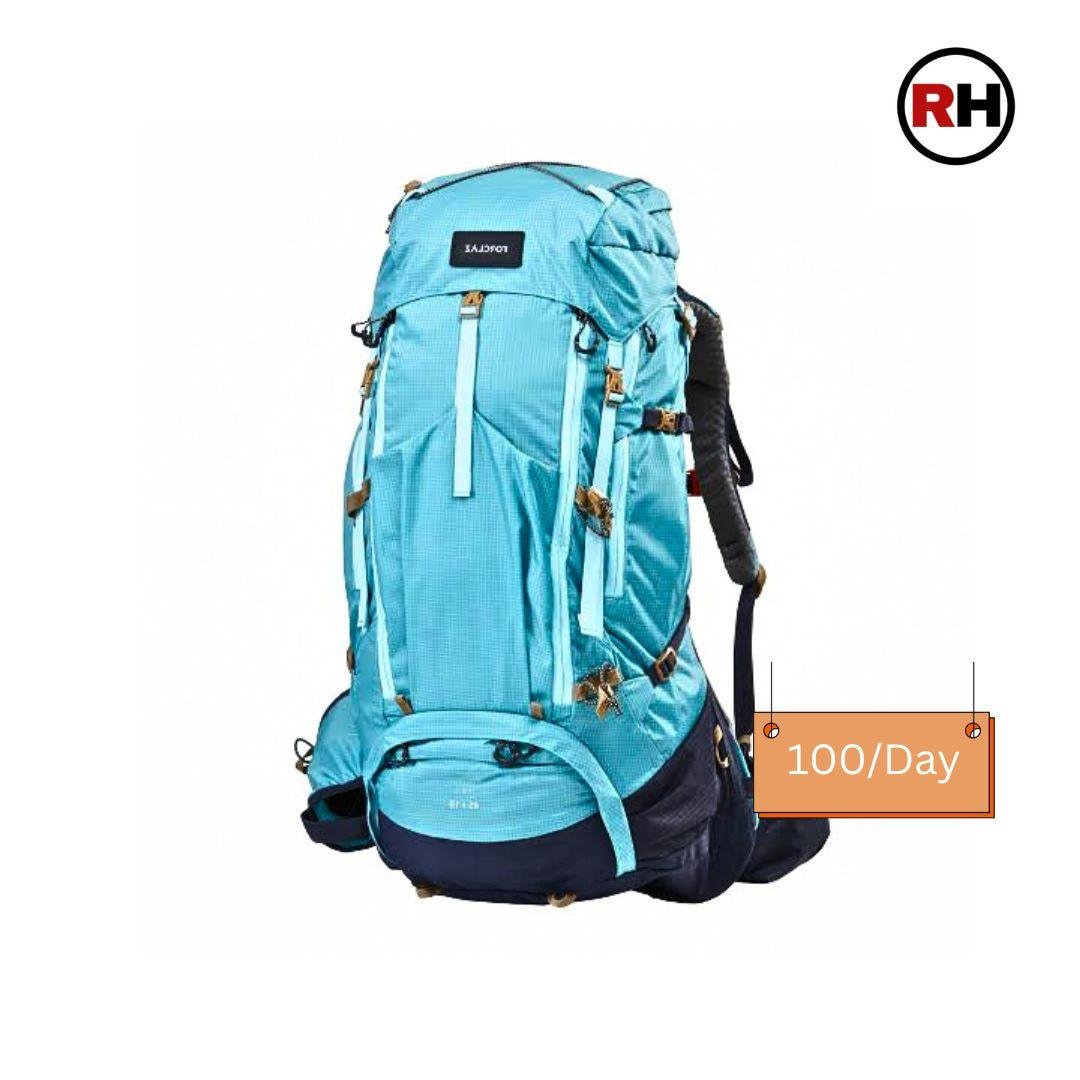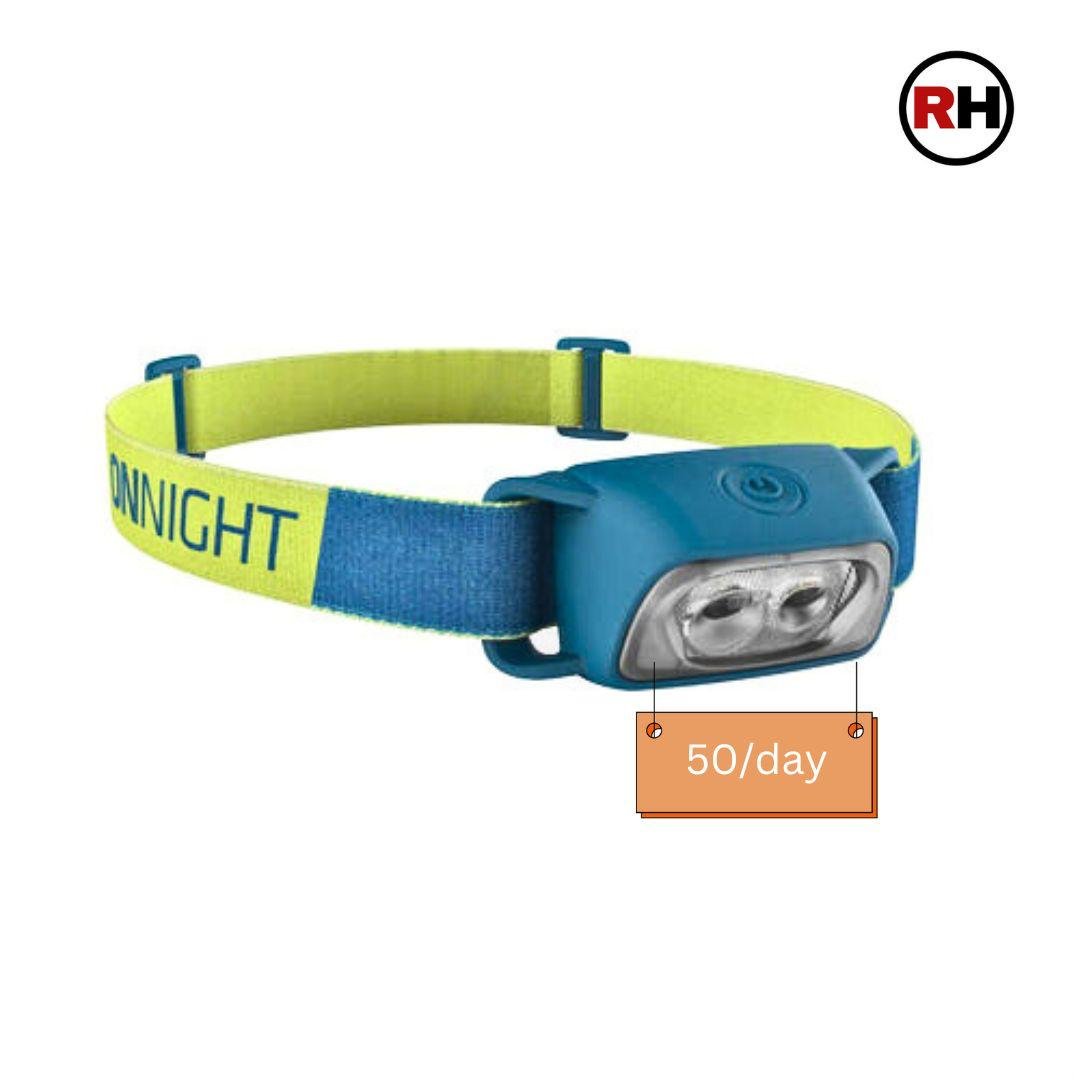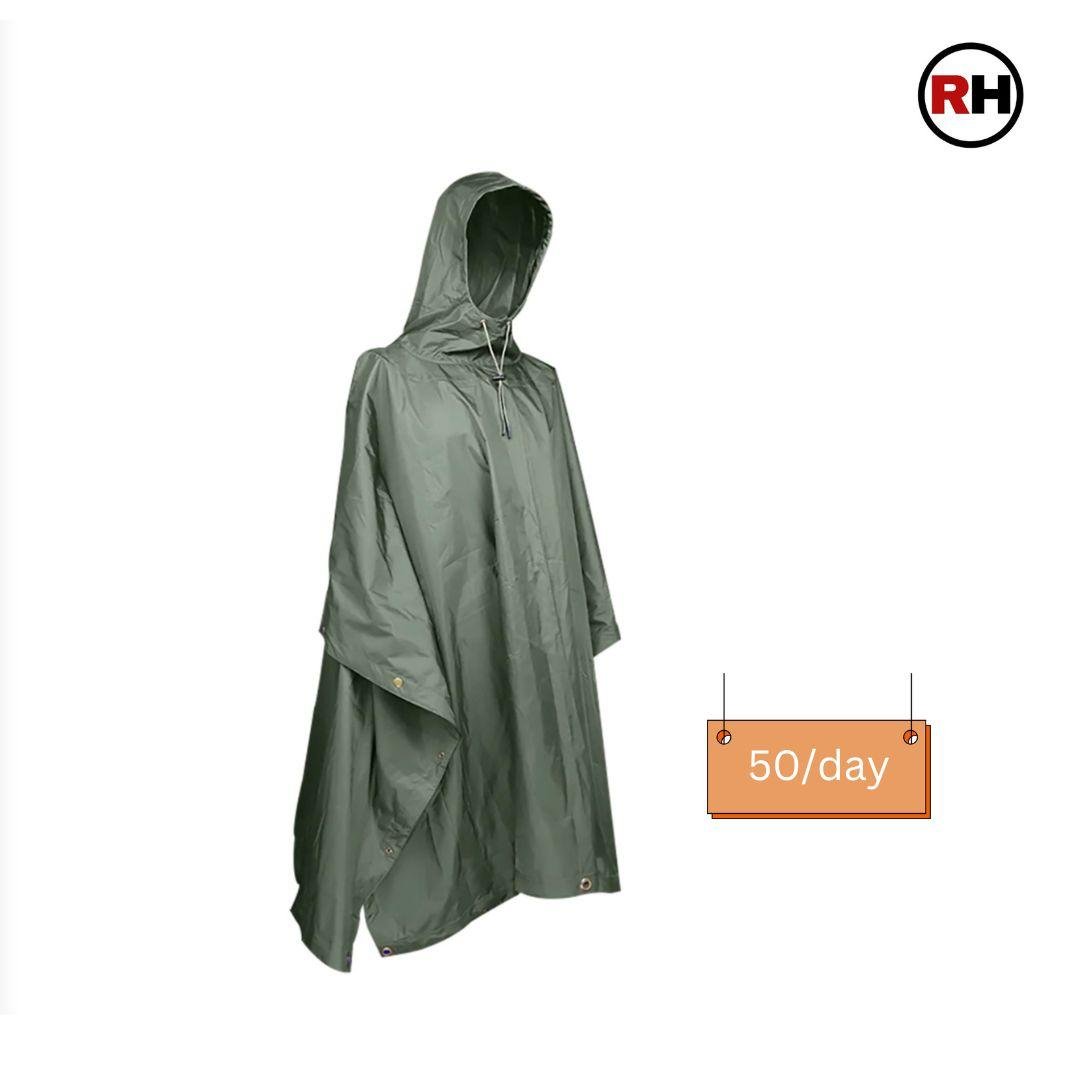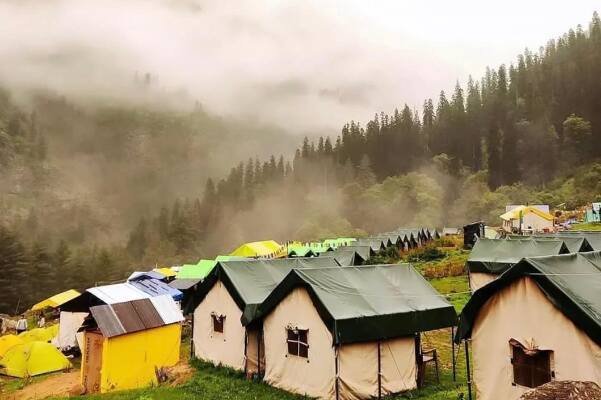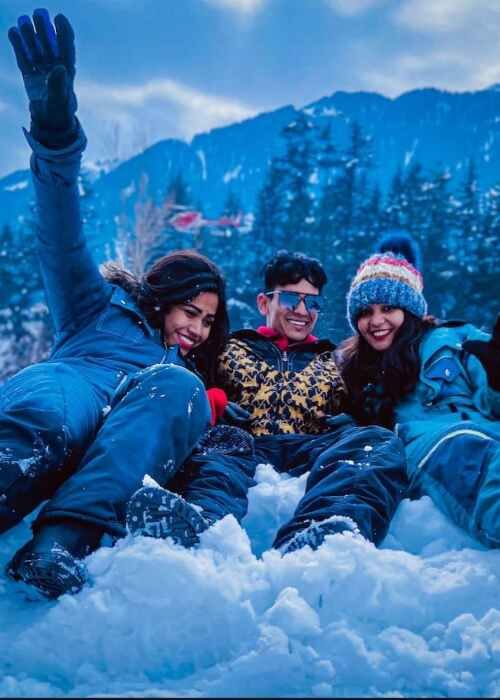Har Ki Dun Trek
The word “Har Ki Dun” means “Valley of the Gods.” The Pandavas walked this path to get to heaven.
Trek Grade
Easy to Moderate
Highest Altitute
12,000 ft/3627 m
Best season
Summer | Autumn
Trek Duration
6Night | 7 Days
Trekking Km
43 Km
Stays
Hotel/camp
transport
Dehradun-Dehradun
trek region
Uttarakhand
Base camp
Sankri
Meals
veg meal/egg
Trek Grade
Easy to Moderate
Highest Altitute
12,000 ft/3627 m
Trek Duration
6Night | 7 Days
Base camp
Sankari
Meals
veg meal/egg
Stays
Hotel/camp
transport
Dehradun-Dehradun
trek region
Uttarakhand
Trekking Km
43 Km
Trek Grade
Easy to Moderate
Highest Altitute
15,000 feet
Base camp
Rishikesh
Trek Duration
3D | 2N
Stays
Meals
transport
activities
How to Reach
Trek Grade
Trek Grade
Trek Grade
Trek Grade
Trek Grade
Har Ki Dun Trek Overview
Har Ki Dun, a renowned trek, beckons adventurers with its timeless allure. Throughout the ages, hikers have ventured upon its winding trails, drawn by the majestic Swargarohini massif that graces the horizon from Har Ki Dun’s vantage point. The Har ki dun trek is also affectionately dubbed the “Hanging Valley” due to the embrace of its cradle–shaped mountains. Translating to the “Valley of God,” Har ki Dun exudes a divine essence that captivates all who wander its trails.
The ever–changing hues of each season render this route an ideal sanctuary for nature enthusiasts and avid trekkers alike. Embark on a journey reminiscent of the Pandavas‘ trek in the Mahabharata, where every step unveils nature’s splendor. Meander alongside a tranquil river winding through picturesque hills, blessed with the chance to witness the dawn painting the valley with golden hues. As dusk descends, marvel at the spectacle of the sun setting the sky ablaze in fiery shades of red and orange.
Venture through this pristine wilderness, encountering a diverse array of wildlife, from elusive leopards to majestic barking deer. Keep an eye out for the Himalayan Langur and Blue Sheep, adding to the allure of this natural paradise. Indulge your taste buds in the flavors of local cuisine at rustic dhabas scattered along the path,
offering a culinary journey enriched with the essence of the region. Immerse yourself in the cultural tapestry of the area with visits to ancient temples, steeped in history and spirituality.
Take a piece of the Himalayas home with you, as you peruse locally grown rajma, potatoes, and rice, alongside intricately knitted jackets and cozy sweaters. Experience the essence of tradition and nature intertwined in this unforgettable expedition.
Har Ki Dun Trek Key Highlights
Here are the key highlights that make the Har Ki Dun Trek one of the most soul-stirring and unforgettable journeys in the Indian Himalayas:
The Mythical Valley of Gods
- The word “Har Ki Dun” means “Valley of the Gods.” The story goes that the Pandavas walked this path to get to heaven. It feels like walking through a living epic when you trek through this land full of myths.
Himalayan landscapes that will blow your mind
- The scenery changes a lot every day. It goes from lush green meadows and rivers fed by glaciers to snow-capped peaks and dense pine forests. This keeps your senses alive and your camera busy.
Beautiful views of the Swargarohini Peaks
- The Swargarohini massif stands out in the skyline, especially from the Har Ki Dun valley. People think that these beautiful mountains are the mythical stairway to heaven, which makes them a spiritual and visual treat.
A lot of cultural experiences in faraway villages
- Go to villages like Osla and Seema that haven’t been changed by modern tourism. The wooden houses, traditional ways of life, and friendly smiles will give you a taste of what it’s like to live in Garhwali culture.
Many plants and animals
- This part of the Govind Pashu Vihar National Park is a biodiversity hotspot. If you’re lucky, you might see musk deer, Himalayan monal, or even black bears among the blooming rhododendrons and alpine flowers.
Rivers of melting glaciers and hanging bridges
- Walk next to clear mountain streams and over exciting wooden bridges that hang over the Tons River. The cold water and rushing sounds make it feel like you’re in nature with every step.
A Haven for Photographers
- Every section of the trail is picturesque, whether it’s the golden meadows, the rustic village scenes, or the early morning light on the peaks. The natural beauty of this place is pure and unadulterated.
Ideal for Winter Snow Trekking
- From December to April, the valley is turned into a pristine wonderland. Har Ki Dun is among the top snow treks in Uttarakhand for novices.
Calm, Unusual, and Less Congested
- In comparison to treks like Valley of Flowers or Kedarkantha, Har Ki Dun Trek is still not as well-marketed. It is perfect for those who wish to take leisurely, peaceful trips through the Himalayas.
Har Ki Dun Trek Route Itinerary
Daily Hiking Schedule Of Har ki Dun trek
Day 1 Dehradun to Base Camp Sankri
(210 km Drive, 9-10 hrs approx)
Dehradun to Base Camp Sankri
(210 km Drive, 9-10 hrs approx)- Stay: Overnight stay at the Guest House in Sankri
- Meal: Tea snacks, Dinner.
- Altitude: sankri (6,400 ft).
- Distance: 210 Km
- Time Taken: 8-9 hrs approx.
- Trek Grade: By Road
Embark on a picturesque journey from Dehradun to the enchanting base camp of Sankri, nestled amidst the Yamuna and Tons valleys, spanning a scenic 210 km drive. As you traverse through this breathtaking landscape, marvel at the Yamuna bridge and immerse yourself in the serenity of dense pine forests.
The road to Sankri winds through some of the most captivating destinations in the Himalayas, including the quaint towns of Mussoorie, Nainbagh, Damta, Newman, Mori, Purola, and Netwar, offering glimpses of nature’s grandeur at every turn.
Located within the tranquil environs of the Govind Wildlife Sanctuary in Uttarkashi district, Sankri welcomes you with its rustic charm and vibrant mini–market, renowned for its cozy wooden huts serving delectable local cuisine.
Explore the verdant apple orchards and lush greenery surrounding Sankri, basking in the pollution–free ambiance and breathtaking vistas of snow–capped mountains. As evening descends, be captivated by the mesmerizing sunset casting its warm glow over the majestic mountain ranges, with a panoramic view of the Swargarohini peaks from the base camp.
Sankri, adorned with around 250 quaint houses, boasts a handful of dhabas and shops, offering a glimpse into the simple yet captivating village life. Witness the ethereal spectacle of the setting sun behind the towering Himalayas, with the Swargarohini peaks glistening in the fading light.
Spend a serene night under the star–studded sky in comfortable camps at Sankri, indulging in a wholesome and delicious dinner.
Day 2 Sankri to Dharkot Village by drive & Trek From Dharkot to Seema
(16 km Drive, 1 hrs approx),(4 km Trek, 3-4 hrs approx)
Sankri to Dharkot Village by drive & Trek From Dharkot to Seema
(16 km Drive, 1 hrs approx),(4 km Trek, 3-4 hrs approx)- Stay: Overnight stay in tents at Seema
- Meal: breakfast, packed lunch, evening tea snacks, soup and dinner.
- Altitude: Seema (8,150 ft).
- Distance: by drive 16 km and trek 4 km
- Time Taken: By Drive 1 hr and trek 3-4 hrs approx.
- Trek Grade: Gradual
Embark on an adventure from Sankri to Dharkot village after a satisfying breakfast. Traverse through dense
forests and alongside picturesque water streams, immersing yourself in the natural beauty of the surroundings.
Keep your senses keen as you may encounter rare mountain bird species, including the majestic Himalayan Monal, adding to the allure of the journey. Revel in the breathtaking views of wild orchids and remain vigilant for glimpses of Himalayan wildlife such as leopards and barking deer along the way.
As you drive through the idyllic village of Taluka, renowned for its traditional houses and charming dhabas, take a moment to soak in the quaint ambiance before reaching Dharkot. Here, take respite and recharge before embarking on the trek to Seema, a mere 4km away.
Prepare for an exhilarating trek through varied terrain, including rocky surfaces, wooden bridges, and verdant trails meandering alongside the Supin river. Marvel at the diverse array of mountain animals and birds that call
this region home, their presence adding a touch of wilderness to the journey.
Quench your thirst from the pristine streams that dot the trek route, providing refreshment amidst the rugged landscape. As evening descends, arrive at Seema via Gangar village, where a small green field awaits, offering a tranquil spot to set up camp and admire the awe–inspiring views of nature surrounding you.
Day 3 Trek from Seema to Boslo
(10 km Trek, 7-8 hrs approx)
Trek from Seema to Boslo
(10 km Trek, 7-8 hrs approx)- Stay: Overnight stay in tents at Boslo.
- Meal: breakfast, lunch, evening snacks, shup and dinner.
- Altitude: Boslo(9,790 ft).
- Distance: 10 kms trek
- Time Taken: 7-8 hrs approx.
- Trek Grade: Gradual
Embarking on the journey from Seema to Boslo, a distance of 10 kilometers, awaits a 6-7 hour trek that commences early in the morning at around 6 a.m., following a hearty breakfast. Within 45 minutes, you’ll find
yourself in Osla village, nestled on the opposite bank of the Supin River, accessible via the iconic Seema Bridge, a picturesque hanging bridge with a backdrop of snow–capped mountains, offering a perfect setting for capturing stunning photographs.
The trail leads past three hydroelectric run chafing units, utilized by villagers for processing maize and millet, amidst a landscape characterized by serene harvest fields, grazing cattle, and traditional slant–roofed granaries Amidst this tranquil setting, Amaranth trees dot the landscape, their orange–red hue during the monsoon season creating a striking contrast.
As you proceed, within half an hour, be greeted by the breathtaking panorama of Mt. Bandarpoonch and the
Swargarohini mountain ranges. Transitioning through cashew nut and walnut forests, you’ll arrive at the serene village of Osla, steeped in rich mythology. Legend has it that the village was once inhabited by a clan devoted to Duryodhan of the Kauravas, evident in the ancient Someshwar Temple dating back 2000 years. Villagers, adorned in attire reflecting their cultural heritage, warmly welcome visitors, offering insights into their customs and
traditions.
Continuing from Osla, the trail ascends steeply, offering stunning vistas of the Dhauladhar Range and the paths leading to Borasu Pass and Baspa Valley. The journey winds further to Kalkatidhar, a verdant meadow boasting magnificent views of Bugyal Devsu and Mt. Black Peak, with the Ruinsara Range and Kedarkantha Summit adorning the horizon.
Take a moment to savor the beauty of the surroundings, resting and preparing for the summit ascent the
following day, amidst nature’s awe–inspiring grandeur.
Day 4 Trek from Boslo to Har Ki Dun to Maninda Lake and back to Boslo
(8 km Trek, 6-7 hrs approx)
Trek from Boslo to Har Ki Dun to Maninda Lake and back to Boslo
(8 km Trek, 6-7 hrs approx)- Stay: Overnight stay in tents at Boslo
- Meal: breakfast, lunch, snaks, soup and dinner.
- Altitude: 12,000
- Distance: 8 km trek
- Time Taken: 6-7hrs approx.
- Trek Grade: Moderate
Today’s trek begins earlier than usual, as it marks the longest day of our journey. After a hearty breakfast, we set out, prepared to be dazzled by the breathtaking views that await us. As we traverse through the glacier basin adorned with mountain meadows and moraines, majestic pine trees line our path, welcoming us with each step.
Our trail begins with a climb to the intersection of the Supin River and the River from the Ruinsara Valley, offering mesmerizing vistas of the surrounding mountains. The journey entails a mix of moderate and steep climbs as we
make our way towards the Har Ki Dun valley. Along the ascent, icy snow patches and snow–covered waterfalls adorn the landscape, transforming into a winter wonderland during colder months.
The Har Ki Dun unfolds before us, a spectacle of unparalleled beauty encompassing towering peaks like Swar- garohini, Hata Peak, and Black Peak.
Amidst meadows, coniferous forests, frozen streams, and glacier moraines, the backdrop of colossal mountains creates a mesmerizing panorama. The trail culminates at a 45–degree elevation, where the final stretch, though not as steep as it appears, presents challenges, especially in snowy conditions.
Ascending through dense forests, we reach the summit of Har Ki Doon Trek, offering stunning perspectives of Swargarohini I peak, Hata Peak, and Black Peak. Marinda Tal, also known as Morinda Tal, awaits exploration, a stunning high–altitude lake nestled amidst the Har Ki Dun valley. With Hatta and Swargarohini mountains as a breathtaking backdrop, this tranquil oasis at an altitude of 3,970 meters captivates the soul.
After immersing ourselves in the valley’s beauty and creating cherished memories, we make our way back to our final campsite at Kalkattiyadhar, cherishing the experiences of a journey that will linger in our hearts forever.
Day 5 Trek from Boslo to Seema
(10 km Trek, 4-5 hrs approx)
Trek from Boslo to Seema
(10 km Trek, 4-5 hrs approx)- Stay: Overnight stay in tents at seema
- Meal: breakfast, lunch, sancks, soup and dinner.
- Altitude: Seema (8,150 ft).
- Distance: 10 kms trek
- Time Taken: 4-5 hrs approx.
- Trek Grade: Easy
Day 6 Dharkot Village to Sankri by drive & Trek From Seema to Dharkot
(16 km Drive, 1 hrs approx),(4 km Trek, 3-4 hrs approx)
Dharkot Village to Sankri by drive & Trek From Seema to Dharkot
(16 km Drive, 1 hrs approx),(4 km Trek, 3-4 hrs approx)- Stay: Overnight stay at the Guest House in Sankari.
- Meal: breakfast, lunch, sancks, soup and dinner.
- Altitude: Sankri (6,400 ft).
- Distance: (4 km Trek), 16 Km Drive)
- Time Taken: (Trek 5-6 hrs approx)(Drive, 1 hrs approx)
- Trek Grade: Easy
Day 7 Departure from Sankri to Dehradun
(210 km Drive, 9-10 hrs approx)
Departure from Sankri to Dehradun
(210 km Drive, 9-10 hrs approx)- Meal: Tea, biscuit
- Distance: 210 km
- Time Taken: 9-10 hrs approx
- Trek Grade: By Road
- Stay is included on all days of the trek (from Sankri to Sankri). You will be staying in tents on a double sharing basis.
- Transport charges from Dehradun to Sankari and return.
- All meals from dinner at Sankri on Day 1 to tea and coffee on Day 7 are included. Meals are simple, nutritious and vegetarian.
- All the trek equipment will be included like a sleeping bag, kitchen & dining tent, utensils, mattress, tent, toilet tent, and crampon (if needed).
- First aid medical kits, oxygen cylinder and stretcher.
- All fuel charges, toll taxes and needed forest entry fees along with permits.
- Mountaineering qualified and professional trek leader, guide, cook and support staff.
- GST 5% (it is Mandatory)
- Any emergency evacuation charges
- Any services that are not mentioned in the cost inclusion section.
- Any Meals/accommodation beside the itinerary or not mentioned in the program.
- Mules or porters to carry personal luggage.
Best time to do har ki dun Trek
Har ki Dun in March to June Months
- The Har Ki Dun trek typically commences in mid-March, with the valley adorned in patches of snow, particularly evident from Kalkatiyadhar to Devsu Thatch. These snow patches linger as remnants of the preceding winter, owing to the narrow valleys leading to Har Ki Dun.
- Transitioning into the summer months of April and May, the melting snow gradually transforms the landscape, with grasslands along the trail transitioning from brown to vibrant green. This period, also known as Spring, witnesses a profusion of flowers blooming in the woods and meadows, adding a colorful touch to the scenery.
- March to June marks the peak season for the Har Ki Dun trek, offering ideal weather conditions and picturesque views. However, as the monsoon approaches, typically in late May, frequent showers become more prevalent in the valley, intensifying in late June. The lush greenery that ensues from the monsoon rains heralds the closure of the trek during the monsoon season.
Har ki Dun in September to November Months
- In September, the Har Ki Dun valley welcomes trekkers once again, offering a serene experience with fewer crowds compared to spring and summer. The breathtaking views remain equally spectacular, making it an ideal time for those seeking solitude. As the monsoon season fades, the valley transforms into a lush green paradise, with clearer air providing enhanced vistas of the surrounding landscapes.
- With the onset of autumn, temperatures begin to drop, accompanied by a refreshing crispness in the air. While high mountain peaks may witness occasional snowfall, the valley below sees the transition of vibrant greens to shades of brown, eventually turning golden in October and November.
- The first snowfall typically graces the valley in mid-December, evoking a sense of wonder and
excitement among trekkers. Building snowmen and engaging in snowball fights become cherished
memories, etched in the hearts of adventurers. - At Roopkund Heaven, the trek season concludes by the end of November, as heavy snowfall
accumulates, blocking trails beyond Kalkathiyadhar. Beyond this point, completing the trek becomes
virtually impossible due to the deep snow cover, signaling the closure of the trek until the following
season.
How to Reach for Har Ki Dun Trek?
Delhi to Dehradun by Bus
- From Delhi, a regular bus service operates to Dehradun. The main bus station in Delhi is ISBT Kashmere Gate, offering both AC and non-AC buses for the journey to Dehradun.
Delhi to Dehradun by Train
- To reach Dehradun from Delhi stations (NDLS, DLI, DSA, NZM) by train: Take a direct train to Dehradun Railway Station.
Delhi to Dehradun by Air
- The closest airport to reach Dehradun by flight is Jolly Grant Airport, located approximately 35 km from the city. Regular flights from Delhi to Dehradun are available. If you plan to arrive by flight, it’s advisable to schedule your arrival one day in advance.
What to Pack For Har Ki Dun Valley Trek?
As a trekking, adventure, and travel company, we often receive inquiries from our trekkers, and one of the most frequent questions is about what to pack for Har ki dun trek? Sometimes, it can be challenging to provide detailed explanations, so we’ve compiled a comprehensive packing list that will be beneficial for all trekkers heading to the Himalayas. When preparing for a trek and organizing your gear, it’s helpful to follow a systematic approach. You can start either from head to foot or foot to head, ensuring you cover all essentials and minimize the risk of forgetting important items. So, take it step by step and pack accordingly.
Footwear and Backpack
✅Trekking shoes with ankle support
✅Backpack with rain cover
✅Daypack with rain cover
Warm Layers and Clothing
✅Warm layers (Padded jackets )
✅3 layers for spring, summer, and monsoon treks (1 woolen sweater, 1 fleece, 1 padded jacket)
✅4 layers for autumn treks (1 woolen sweater, 2 fleece, 1 padded jacket)
✅5 layers for winter treks (1 pair of thermals, 1 woolen sweater, 2 fleece, 1 padded jacket)
✅3 Collared T-shirts (Wear one, carry two)
✅2 quick-dry trek pants (Wear one, carry one)
Accessories
✅Sunglasses
✅Sun cap, preferably with flaps
✅Waterproof gloves
✅Balaclava
✅Woolen socks (2-3 pairs od Dry + 1 pair of Woolen))
✅Headlamp
✅Trekking pole
✅Rain Jacket + pants/poncho
Toiletries
✅Suncreen
✅Moisturizer
✅Light towel
✅Lip balm or vaseline
✅Toilet paper (wet wipes are strictly not allowed on our treks)
✅Toothbrush
✅Toothpaste
✅Reusable plastic covers (for used clothes)
✅Trash bags (Carry out all your waste and leave no trace behind)
Frequently Asked Questions
Get all your questions answered here about har ki dun valley trek
When is the best time to do the Har Ki Dun Trek?
The Har Ki Dun Trek is best done during two main seasons: spring to early summer (April to June) and autumn (September to November). These months offer the most pleasant weather, safest conditions, and the most beautiful views of the mountains and valleys.
During April to June, the har ki dun weather is mild and comfortable. The days are warm enough for trekking, while the nights can be cold but manageable. The trail is full of greenery, wildflowers, and clear rivers, making it a great time for nature lovers. Snow still remains on some high peaks, so you get a mix of green valleys and snowy backdrops. This season is also good for spotting birds and mountain wildlife.
the har ki dun valley weather From September to November becomes cooler and clearer, especially after the monsoon rains have passed. This is the best time if you want to enjoy crystal-clear views of snow-covered mountains like Swargarohini and Bandarpoonch. The forests begin to change color into shades of yellow, orange, and gold, giving the whole trail a peaceful autumn feel. Nights can get quite cold, especially in October and November, but with proper gear, it’s a great time to trek. In summary, the best time to do the Har Ki Dun Trek is from April to June for flowers and fresh greenery, or from September to November for clear mountain views and autumn beauty. Both seasons offer a safe and rewarding trekking experience.
Is prior trekking experience required for the Har Ki Dun Trek?
No, prior trekking experience is not required for the Har Ki Dun Trek, which makes it a great choice for beginners. It is considered an easy to moderate level trek, meaning it doesn’t involve any steep climbs, technical sections, or dangerous paths. However, you should be in good physical condition and be able to walk for 5 to 6 hours a day with a backpack. The trail is mostly gentle, with gradual ascents through forests, riversides, and meadows. The highest point on the har ki dun trek is around 12,000 feet (3,658 meters), so there is a chance of mild altitude symptoms, but it’s manageable with a slow pace and proper rest.
In short: Even if you’ve never trekked before, you can comfortably do the trek with basic fitness, proper preparation, and a positive mindset. Going with a trusted trekking group and carrying the right gear will also make the experience smoother and safer.
How difficult is the Har Ki Dun Trek?
The Har Ki Dun Trek is considered an easy to moderate level trek, which means it is suitable for both beginners and experienced trekkers. It does not involve any technical climbing or dangerous sections, making it a good option for first-time trekkers who are reasonably fit. The trek reaches a maximum altitude of around 12,000 feet (3,658 meters), which is high enough to offer beautiful mountain views but still safe for those who are new to high-altitude trekking. The trail includes gradual ascents and descents through scenic landscapes like pine forests, alpine meadows, river crossings, and traditional villages. On average, you will walk about 8 to 10 kilometers per day, which takes around 5 to 6 hours, depending on your pace. The path is well-defined and not too steep, although some sections can be tiring, especially on longer walking days. The weather can be cold in the mornings and nights, especially during spring and autumn, so proper warm clothing is important. The risk of altitude sickness is low, but it’s still important to walk slowly, stay hydrated, and rest when needed. In short, the Har Ki Dun Trek is not too difficult and can be enjoyed by people of all ages with basic physical fitness, some preparation, and a positive attitude.
What is the duration and how long is the Har Ki Dun Trek?
The Har Ki Dun Trek usually takes about 7 to 8 days to complete, covering a total distance of around 42 kms. Most of this time, about 5 to 7 days, is spent trekking through beautiful landscapes, walking between 6 to 10 kilometers each day, which takes roughly 4 to 6 hours depending on your pace. The trek typically starts from the village of Sankri and passes through places like Taluka and Seema (or Osla) before reaching the stunning Har Ki Dun Valley. Some trekkers also choose to visit nearby spots like Jaundhar Glacier or Maninda Tal as side trips. After exploring the valley, you return along the same route back to Sankri. Including travel time from and back to Dehradun, the entire trip usually lasts about 7 to 9 days. This makes the Har Ki Dun Trek a manageable and enjoyable journey for those looking to experience the natural beauty of the Garhwal Himalayas..Overall, this trek offers a perfect mix of nature, mountain views, and a peaceful atmosphere, all in about 7 days.
Will there be electricity at the campsites on the trek?
No, there is no electricity at the campsites on the Har Ki Dun trek. The trek passes through remote mountain areas and high-altitude meadows where there are no permanent settlements or power lines. Campsites are typically set up in open areas or near forest clearings, and all essential equipment (like tents, sleeping bags, food, etc.) is carried by the trekking team. However, occasional power outages can happen in remote areas, so it’s still a good idea to carry a power bank or spare batteries as a backup
Is Har Ki Dun trek safe?
Yes, the Har Ki Dun Trek is generally safe for most trekkers, especially if you are physically fit and take necessary precautions. The trail is well-marked and popular among both beginners and experienced hikers, so it is easy to follow and has good support from local guides and trekking groups. However, like any high-altitude trek, there are some risks to keep in mind. The trek reaches an altitude of about 12,000 feet (3,658 meters), so there is a chance of altitude sickness if you ascend too quickly or don’t acclimatize properly. The weather can change suddenly, bringing cold temperatures, rain, or even snow, especially in early spring or late autumn. The paths are mostly safe, but some sections might be slippery or uneven, so wearing proper trekking shoes and walking carefully is important. To stay safe, it’s best to go with an experienced guide, carry enough warm clothing and supplies, stay hydrated, and listen to your body. If you feel unwell, don’t push yourself too hard and take rest or descend if needed.
In summary, the Har Ki Dun Trek is safe when done with proper preparation, caution, and respect for the mountain environment.
Is a mobile network available on the Har Ki Dun Trek?
Mobile network is mostly not available during the Har Ki Dun trek. You may get some signal at Lohajung, the starting point, where Jio, Airtel, or BSNL might work. But once you start the trek, there is usually no network in all places. Sometimes, a very weak signal may come at higher points, but it’s not reliable. So, you should inform your family and friends before the trek that you will be out of network for a few days. It’s also a good idea to keep your phone on airplane mode to save battery and carry a power bank. Sharing the contact details of your trek coordinator can also help ensure important updates are communicated when needed.
Har Ki Dun Trek Cost
Sankri-Sankri
Add ons
Total: ₹








Blogs

Kedarkantha Trek
Kedarkantha is a popular trekking destination in the Uttarkashi district of Uttarakhand

Kedarkantha Trek
Kedarkantha is a popular trekking destination in the Uttarkashi district of Uttarakhand

Kedarkantha Trek
Kedarkantha is a popular trekking destination in the Uttarkashi district of Uttarakhand

Kedarkantha Trek
Kedarkantha is a popular trekking destination in the Uttarkashi district of Uttarakhand, India. It is a winter trek that offers breathtaking views of snow-capped mountains, dense forests, and frozen lakes. However, it is important to plan your trek at the right time of the year to ensure a safe and comfortable experience.
Blogs

Ravana Falls Sri Lanka | How to Reach, Best Time, and Travel Tips

Ravana Falls Sri Lanka | How to Reach, Best Time, and Travel Tips

